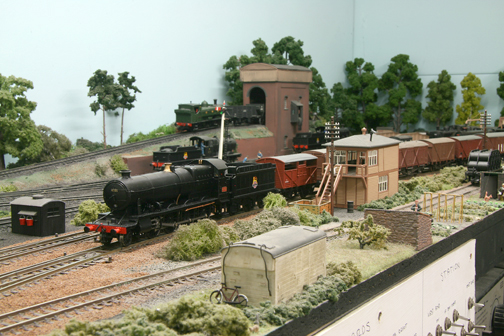
Coleston - c 1950 2

No.4705, one of Churchward's impressive mixed traffic 2-8-0s, often nicknamed 'Night Owls' because of their normal duties of fast overnight express freights, seen on this occasion in daylight hours on a fitted freight service passing Coleston signal box.
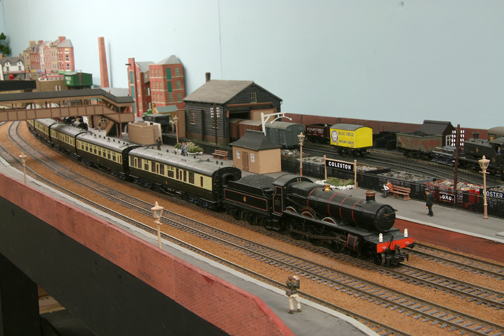
Another of the former Scott 'Atlantics' - no.2981 "Ivanhoe" hurries through Coleston on an 'up' express working. The loco is seen in BR lined black livery, but the coaches are still in the Hawksworth-era GWR livery. At the time, "Ivanhoe" was the last of the 'Saint' class to still be running with inside steam pipes, all the others remaining in service having had the front ends renewed with new cylinders and outside steam pipes. It was withdrawn in March 1951.
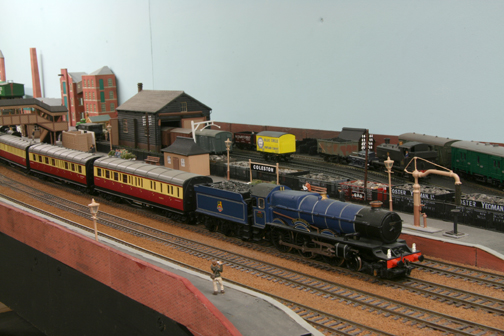
No.6027 "King Richard I" looking resplendent in its pseudo-Caledonian Railway lined blue livery, on a restaurant car express on the 'up' through line. This livery was carried by 'Kings' for only a few short years in the early 1950s, subsequently being replaced by the lined green of the 'Castles' and 'Stars'.
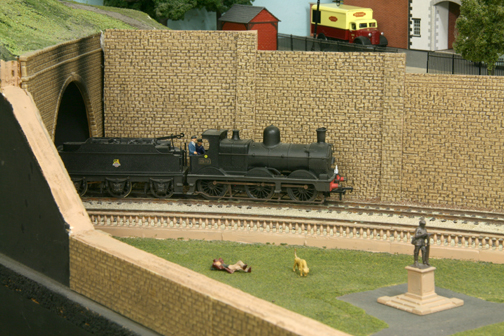
Dean Goods no.2579 emerging from Castle Hill tunnel, and immediately passing through Victoria Gardens on the approach to Coleston station from the west, with a pick-up freight working.
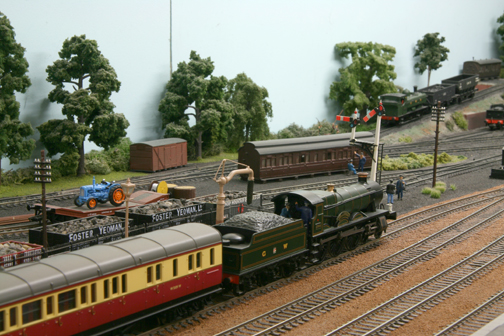
No.2908 "Lady of Quality" waiting for the right-of-way in the 'up' bay at Coleston. The 'Lady' series of 'Saint' Class locos numbered ten in total (2901 - 2910), and were built in 1906, with straight running plates along under the cab, inside steam pipes, and square drop-down sections ahead of the smokebox down to the buffer beams. They were subsequently rebuilt in the 1930s with modern front ends, which included new cylinders, outside steam pipes, and curved drop-down sections to the buffer beams, but retained their straight running plate under the cabs, with the distinctive 3-tread steps up to the cab. She is seen here in full post-war GWR livery, with G (crest) W insignia on the tender sides. She was withdrawn from service in December 1950.
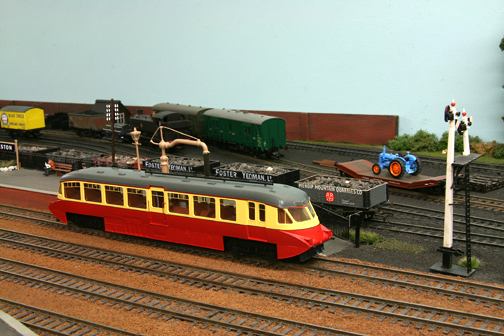
Diesel railcar no.W8W waiting in the 'up' loop for permission to proceed onto the main line. These railcars were built for the GWR by Gloucester RCW in the 1930s, and lasted until ousted by the first generation BR multiple units in the late 1950s / early 1960s. Their streamlined body shape gave rise to their nicknames of Flying Bananas.